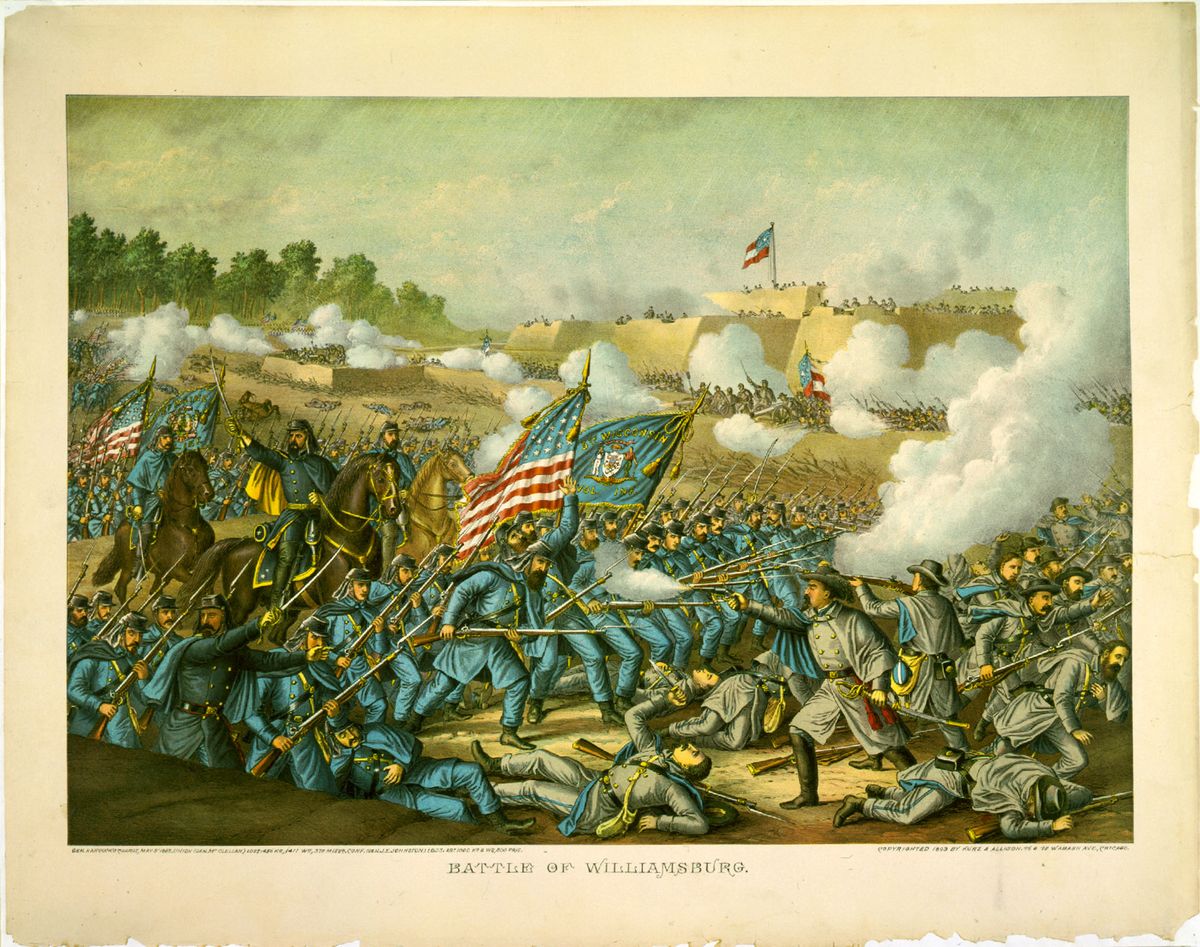Mass grave found in Williamsburg is linked to Civil War battle

When archaeologists at Colonial Williamsburg discovered human remains near the site’s historical Powder Magazine last year, they soon realized that what they had found was not a single burial.
And as they probed, it became clear that the find had nothing to do with life in the old colonial capital of Virginia. It was a mass grave they believe is associated with the Civil War’s Battle of Williamsburg in 1862.
It’s not yet known how many people were buried there, but Jack Gary, the head of archaeology at the Colonial Williamsburg Foundation, said that the remains of “multiple individuals” were found and that they could be those of Union and Confederate soldiers who perished during or after the battle.
“We need to figure out who they are in order to figure out the best place to reinter these individuals, the most respectful place to do that,” Gary said Monday.
Archaeologists are exposing the bones and plan to exhume them to conduct DNA analysis.
Fragments of clothing that emerge could tell on which side individuals fought. And the bones could reveal a soldier’s cause of death.
“That’s something that we’ll be looking out for,” Gary said. “Cause of death … may be obvious, maybe in the form of bullets, shrapnel, or other injuries.”
A similar grave found on the Manassas battlefield in 2015 contained the shattered leg of a Union soldier with a Confederate bullet still buried in the bone.
Gary said the mass grave is near the old site of the Williamsburg Baptist Church - which was demolished in the mid-1900s - that was beside the Powder Magazine and served as a hospital during and after the battle.
“We’re currently in the process of exposing the remains to determine how many individuals are in the grave,” he said. Some bones have been removed, but most are still in the ground.
Once exhumed, the remains will go to the Institute for Historical Biology at William & Mary for study. DNA analysis will be done by Raquel Fleskes at the University of Connecticut, Gary said.
The discovery was earlier reported by the Virginia Gazette and the Daily Press.
The battle of Williamsburg, on May 5, 1862, was fought southeast of the town. Afterward, almost every building in the community flew a yellow hospital flag, the historian Stephen W. Sears wrote.
“Union soldiers, Confederate soldiers, even civilians were in these makeshift hospitals … one of them being in the Baptist church right next to the Powder Magazine,” Gary said. “There’s quite a bit of documentary evidence right after the battle about there being mass graves dug for the casualties that are happening in the Baptist church hospital.”
Pvt. John Wilson, of the Union’s 38th New York Infantry Regiment, wrote in his diary, according to the American Battlefield Trust: “The rebels left about 1000 sick and wounded in Wm.burg. [I] was all over the battle field to day and it was an awful looking sight, at some places our men and the rebels laying side by side where [they] charged bayonets and killed each other.”
Another Union soldier, Warren Lee Goss, wrote, according to an account in “Battles and Leaders of the Civil War”: “After the engagement I went over the field … [and] came upon one of our men who had evidently died from wounds. Near one of his hands was a Testament and on his breast lay an ambrotype picture of a group of children and another of a young woman.”
The battle occurred during the Union army’s failed attempt to seize the Confederate capital, Richmond, in the spring and summer of 1862. Confederate forces fought to slow the Union advance.
The battle was inconclusive. The Confederates retreated. But the fighting killed and wounded an estimated total of 3,800 from both sides, according to the American Battlefield Trust.
Gary said the human remains were discovered last year during archaeological excavation around the Powder Magazine.
The octagonal brick building was constructed in 1715 to house arms and ammunition, according to Colonial Williamsburg. The building was restored in 1930.
“We only saw a fragment of the remains,” Gary said. “We immediately knew that they were human. We halted our excavation … covered them back over.”
In January, the team received a permit to exhume the remains in the grave, and the work resumed last month.